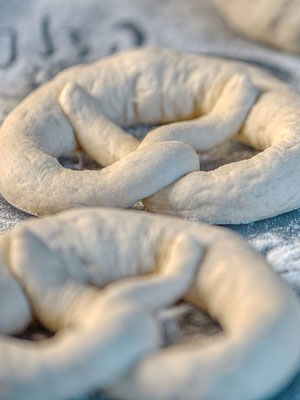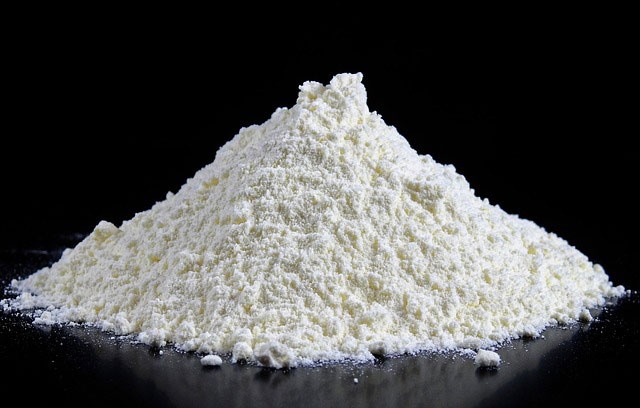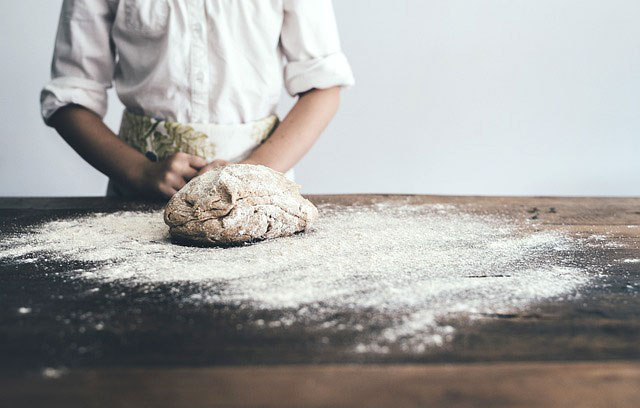GrainProTrade – Flour wholesale at producer prices
Our company GrainProTrade delivers flour directly from the farmers at favorable conditions. You can safely buy flour from us without worrying about the quality, as all our products are consciously selected by our QM staff in Central Asia and thus meet the highest standards, which guarantees the expected quality of the goods. Besides the high standard, the products are sold at an affordable wholesale price. The terms of sale of flour can be specified at any time in writing or by phone with the manager. Our team delivers the flour ordered by our customers within 5 working days.
The main advantages of the ZusaWorking with our company:
- the high level of professionalism of our entire team, which ensures problem-free delivery of quality flour in the shortest possible time;
- an appropriate price level, since we work directly with producers, e.gusamen work;
- convenient delivery straight to you.
Contact our managers on the website or by phone. We offer high quality flour at an optimal price!

Baker

Flour

Bread

Flour

Brezeln
All About Flour
Flour is obtained by grinding the grains of cereal plants into a powder. mainly become Rye and Wheat used for processing. Corn, Oats, Barley, Buckwheat are ground in smaller quantities. All existing varieties are classified according to three criteria: species, type, variety.
In the baking business, there is such a thing as a flour yield. It is characterized by the percentage ratio of flour obtained by grinding to the weight of the starting material. Accordingly, if with 100 kg Grains 80 kg of finished product are obtained, the yield is 80%.
Based on the type of grain used in the milling, the type of flour is determined. It can be obtained from wheat grains, rye, peas, barley, rice, etc. or from a mixture of several crops.
The area of application determines the type of flour. Wheatgrass is great for baking and cooking pasta. It's bakery and pasta. The first is made from soft wheat varieties, the second from firm, with high glassiness. The result of processing rye grains is only used for baking purposes.
The type of flour is an important quality indicator. He is closely related to her exit. The lower this indicator, the higher the grade. The highest grade is characterized by the lowest value and rightly bears its name. There is virtually no waste in the production of whole wheat flour - it is coarse and considered the lowest grade.
The consumer properties of flour depend on the chemical Zusacomposition of the flour, its energy value and use. The chemical Zusacomposition of flour is the chemical zusacomposition of the grain from which it is made. Especially with lower varieties it is the Zusacomposition of a whole grain.
However, compared to grain, flour contains more starch and less fat, sugar, fiber, minerals and vitamins. Of the dry substances in wheat flour, carbohydrates (60-70%) dominate, especially starch. Its content decreases with a decrease in the type of flour.
In higher varieties, the total amount of proteins is lower, while gliadin and glutelin are large. Gliadin and glutelin are the main proteins in wheat flour. They form gluten, which plays a major role in baking production. The fat, sugar and fiber content in wheat flour is low – 1,1 to 2,2%, 0,2 to 1,0% and 0,1 to 1,0%, respectively. Ash content from 0,5 to 1,5%. With a decrease in the type of flour, the content of these substances increases.
The energy value of flour is high. Depending on the type and type of flour, it represents: wheat from 300 to 330 kcal/100 g, rye from 290-300 kcal.
In contrast to wheat flour, rye flour contains less starch (56-64%), proteins (7-11%) and slightly more sugar and fiber.
Flour made from different types of grain is characterized by different consumer properties. It has different chemical content, color, different use.
Flour with high consumer properties can only be obtained from benign grain. Defects in smell, taste and color of the grain are transferred to the finished product. The consumer properties of flour deteriorate if a self-heated, germinated grain damaged by agricultural pests, especially a bug, is used for its manufacture. This flour contains less gluten and, moreover, its quality is low.
all-purpose flour
It is made from wheat grain or common wheat with solid impurities (up to 20%) and is used in the manufacture of bakery, flour and pasta products, for sale in a trade network and other purposes.
Wheat flour is divided into supreme, first and second grades, groats and wallpaper. The type of flour directly depends on the type of milling. So, the flour of the highest grade has the finest grinding (30-40 µm), has a white color and does not have grain disk particles in its Zusacommendation.
The flour grains of the first variety are slightly larger (40-60 µm), the ZusaThe composition contains a small number of corn skin particles (3-4% of the total mass of the flour), the color can be both pure white and white with a yellowish tint.
Second grade flour (30-200 µm) has more grain hulls (8-10%) and its color can range from yellowish to brown. There are actually no elements of the grain hulls in the croup, such flour has a light cream color.
Wallpaper flour is made by the largest grinding, its individual grains can vary significantly in size (from 30 to 600 microns), the color of the flour is white with a brown or grayish tint.
The most useful of all varieties are the second variety and wallpaper flour. The fact is that they contain vitamins, minerals and proteins, while there are almost no useful substances in flour of the highest grade. The fact is that the highest grade consists of the core of the grain, which, unlike the husk, does not contain any of the above components.
Each of the types of flour, due to its properties, is suitable for baking certain products. So, the best confectionery of the highest quality is made, first-class flour is well suited for unsweetened baking, you can make yeast dough pastries from grain, and second-class flour and wallpaper flour serve as the basis for baking various types of bread.
When choosing flour, remember that high-quality flour should creak your fingers a little, but should not stick to them or roll into a lump. When this happens, it indicates increased flour moisture.
The flour is packed in consumer and transport packaging. The consumer container for flour is: paper bags; Cardboard or paper packs with inner bags; Bags with thermally welded polymeric materials. Packages and packs must zusabe glued together. Flour is packed in consumer packages with a net weight of 1, 2 and 3 kg, and grain - from 250 g to 1 kg, a multiple of 25 g.
rye flour
For the intended purpose there is only one bakery. Depending on the production technology, this type of flour is divided into three varieties: seeded, pitted, sourced.
Saturated flour is a product of sown and double varieties. This is an endosperm ground into a powder. It has about 3% of the seed particles in its Zusament, its color is white with a bluish tint. The size of the flour particles varies between 20 and 200 µm.
Wallpaper flour is made by tearing off and double varieties. It differs from the large particles seeded with the darkest (greyish) color in its Zusaup to 10% of the seed particles. Flour particles range in size from C to 400 microns. Wallpaper flour is the main variety of rye flour. It is obtained due to wallpaper grinding, the yield is 95%. Wallpaper flour consists of inhomogeneous particles (C-600 µm), has a gray color, the sowing particles are clearly visible in it.
Rye-wheat flour and wheat flour made from rye flour
Rye-wheat flour is obtained by grinding rye and wheat in a ratio of 60:40 and wheat flour in a ratio of 70:30 (a deviation of no more than ±5% is allowed). Rye-wheat flour and wheat flour is off-white in color with conspicuous grain hull particles.
In bakeries, rye-wheat flour is also made by mixing rye and wheat flour of different varieties. Thus, rye-wheat flour is made from: rye cushion flour and wheat cushion flour; rye cushion flour and wheat cushion flour; 2nd grade rye cushion flour, etc. formed.
This mixture of flours of different grades and types is used to improve the consumer properties of bread (taste, color, texture, porosity, etc.).
rice flour
Rice flour is not only used to replace gluten flour, it also makes desserts and baked goods much tastier in some recipes. It is commonly used in Asian cuisine when baking gooey coconut cakes and candies.
Rice flour — a gluten-free substitute for plain flour — is great for baking.
If you have problems with your digestive system, e.g. B. constipation, gas in the intestines, diarrhea, etc., you may have a wheat intolerance.
Foods rich in gluten include wheat, rye, oats, barley and spelt. Foods that do not contain gluten include corn, quinoa, buckwheat, lentil flour (Gram), and rice.
Rice flour is made from ground, polished rice, which is mostly starch and contains no gluten at all. It is very easy to digest. Also use it like cornmeal, make thin noodles, candy, shortbread dough and other baked goods. Like potato flour, it is used as a thickener (in small amounts) in sauces and goulash, but without adding coloring or other additives.
cornmeal
In Russia, corn was called corn and corn products, mainly cornmeal, until the 20s.
In addition to the types of flour related to raw materials, about which it is written above, the first is also divided into types and varieties. Thus, the most commonly used wheat flour is by type bakery, confectionery and pasta. The type of flour comes from its purpose, that is, the baking flour is intended for the manufacture of baked goods, beautiful cakes and pies are made from the confectionery, and the pasta is ideal for making spaghetti and similar products.








